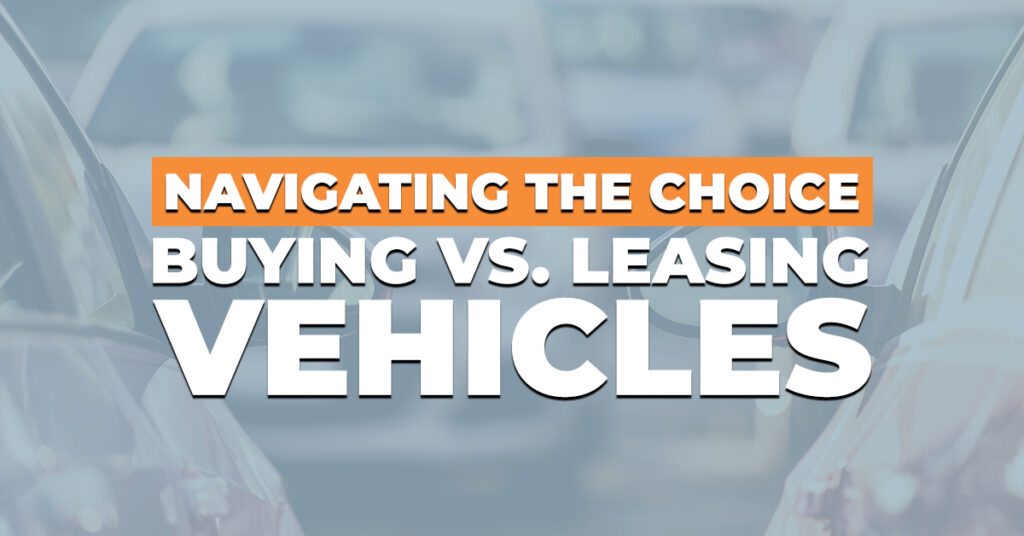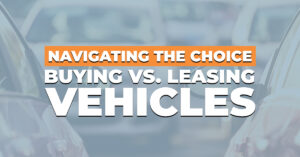Driving Business Success: Navigating the Choice Between Buying and Leasing Vehicles

Choosing whether to buy or lease a business vehicle is a crucial decision that can significantly impact your company’s financial health. Both options come with their own set of advantages and drawbacks, and understanding the key differences is essential for making an informed decision.
In this article, we will delve into the intricacies of buying versus leasing a business vehicle, exploring factors such as costs, calculations, decision-making criteria, and the after-tax adjusted present value method.
Difference Between Leasing and Buying
The fundamental difference between leasing and buying a business vehicle lies in ownership. When you buy a vehicle, you own it outright, and it becomes a tangible asset on your company’s balance sheet.
On the other hand, leasing involves a contractual agreement where you essentially rent the vehicle for a specified period, typically two to four years. At the end of the lease term, you may have the option to purchase the vehicle, return it, or enter into a new lease agreement.
How Costs are Calculated for Each Method
Understanding the costs associated with buying or leasing is crucial for making an informed decision. When buying, you incur the full cost of the vehicle, either through an upfront payment or through financing.
In contrast, leasing involves lower upfront costs, typically consisting of a down payment, security deposit, and the first month’s lease payment. Monthly lease payments are generally lower than loan repayments because you essentially pay for the vehicle’s depreciation during the lease term.
Decision-Making Criteria
Several factors come into play when deciding whether to lease or buy a business vehicle. Considerations include your company’s cash flow, the expected usage of the vehicle, the length of time you plan to keep it, and your overall financial goals.
Leasing may be more suitable if you prefer driving a new vehicle every few years, have limited upfront capital, and want to minimize maintenance costs. Buying, on the other hand, may make sense if you plan to keep the vehicle for an extended period, want ownership benefits, and are comfortable with higher upfront costs.
After-Tax Adjusted Present Value Method
The after-tax adjusted present value (ATAPV) method is a financial analysis tool used to compare the costs of leasing versus buying, factoring in tax implications. This method considers the time value of money and accounts for the net present value of cash flows after taxes.
The formula for ATAPV involves discounting future cash flows at the company’s after-tax cost of capital. A positive ATAPV indicates that buying is more financially favorable, while a negative ATAPV suggests that leasing may be the better option.
Formula for After-Tax Adjusted Present Value
Assume you’re going to own a new car for four years and you want to know the difference between leasing and buying. All you have to do is put some numbers into a calculator online and let it do the work.
While it might seem like a lot, remember that a calculator can handle the process quicker. If you want to do this on your own, the details are included:
Present Value if You Purchase
| Money paid at the time of purchase | Add |
| Present value of total monthly payments to buy the financed vehicle | Add |
| Present value of tax savings from interest deductions | Subtract |
| Present value of tax savings from depreciation | Subtract |
| Present value of expected cash from vehicle sale | Subtract |
| Prevent value of tax benefit if sold as a loss or tax detriment if sold as a profit | Add or subtract |
| Final calculation | Total of above |
Present Value if You Lease
| Money paid when signing the lease | Add |
| Present value of monthly payments except the first and last month | Add |
| Present value of the security deposit returned at the end of the lease | Subtract |
| Present value of tax savings from monthly payments | Subtract |
| Tax savings from the first lease payment | Subtract |
| Present value of savings from last month’s payment | Subtract |
| Present value of tax savings from lease acquisition and lease payment reductions | Subtract |
| Present value of tax effect from tax detriment lease inclusion amounts | Add |
| Present value of payments due at the end of the lease to walk from the vehicle | Subtract |
| Present value of tax savings from final payment | Add |
| Final calculation | Total |
Calculating the present value of cash flows for both buying and leasing allows for a direct comparison of the financial implications. The present value (PV) is a measure that considers the time value of money, providing a snapshot of the current value of future cash flows. By comparing the present values of buying and leasing, you can determine which option is more financially advantageous in the long term.
What Matters Besides Money
Beyond financial considerations, several non-monetary factors play a crucial role in the decision to lease or own a business vehicle. The frequency with which you desire a new car is a significant consideration.
Leasing offers the advantage of driving a new vehicle every few years, allowing businesses to maintain a modern and professional image. Trust in the dealer or lessor is another vital factor; a reliable and transparent relationship can influence the overall experience of leasing a vehicle.
The amount of driving you do also impacts the decision. If your business involves extensive travel, owning may be more cost-effective in the long run, as lease agreements often come with mileage restrictions and penalties for exceeding them. The stability of your personal life is another consideration, as leasing provides flexibility that may align with lifestyle changes.
Status considerations should not be overlooked, as the vehicle you drive can project a certain image for your business. Whether it’s a sleek new model or a long-term investment, the choice between leasing and owning extends beyond financial implications to encompass personal preferences, trust, and the image your business wishes to convey.
Final Thoughts
Choosing between buying and leasing a business vehicle involves a careful evaluation of financial and non-financial factors. The decision ultimately depends on your company’s unique circumstances, preferences, and long-term goals.
By understanding the costs, calculations, and decision-making criteria associated with each option, you can make an informed choice that aligns with your business objectives. Whether you opt for ownership or the flexibility of leasing, the key is to strike a balance that meets your company’s needs while maintaining financial sustainability.






